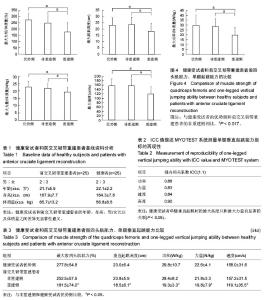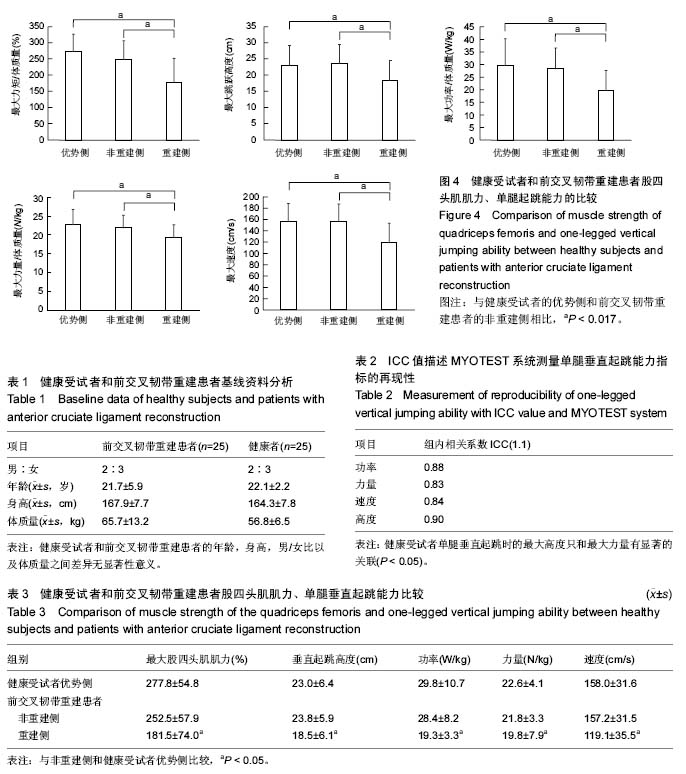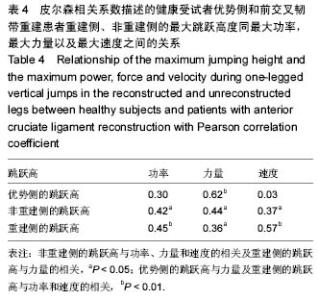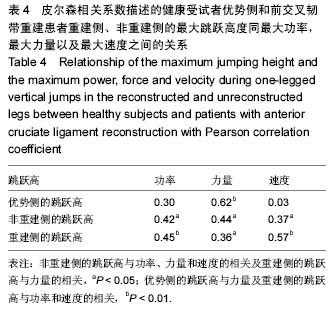| [1] Toth AP,Cordasco FA. Anterior cruciate ligament injuries in the female athlete. J Gend Specif Med.2001; 4(4):25-34. [2] Reider B. ACL&OA. Am J Sports Med.2009; 37(7): 1279-1281.[3] Gustavsson A, Neeter C, Thomee P. A test battery for evaluating hop performance in patients with an ACL injury and patients who have undergone ACL reconstruction. Knee Surg Sports Traumatol Arthrosc. 2006;14(8):778-788. [4] Mortaza M, Osman NAA, Jamshidi AA, et al. Influence of functional knee bracing on the isokinetic and functional tests of anterior cruciate ligament deficient patients. PLoS One. 2013;8(5):e64308. [5] Hegedus EJ, McDonough S, Bleakley C, et al. Clinician-friendly lower extremity physical performance measures in athletes: a systematic review of measurement properties and correlation with injury, part 1. The tests for knee function including the hop tests. Br J Sports Med. 2015; 49(10):642-648.[6] Ventura A, Iori S, Legnani C, et al. Single-bundle versus double-bundle anterior cruciate ligament reconstruction. Arthroscopy. 2013; 29(7):1201-1210.[7] Pairot de Fontenay B, Argaud S, et al. Asymmetries in joint work during multi-joint movement after anterior cruciate ligament reconstruction: A pilot study. Scand J Med Sci Sports. 2014; 24(6): 471-476.[8] Noyes FR, Mooar PA, Matthews DS, et al. The symptomatic anterior cruciate deficient knee. Part 1 : The ling-term functional disability in athletically active individuals. J Bone Joint Surg.1983; 65 A (2):154-162.[9] Saliba L, Hrysomallis C. Isokinetic strength related to jumping but not kicking performance of Australian footballers. J Sci Med Sport.2001; 4(3):336-347.[10] Laudner K, Evans D, Wong R, et al. Relationship between isokinetic knee strength and jump characteristics following anterior cruciate ligament reconstruction. Int J Sports Phys Ther. 2015;10(3): 272-280. [11] De Jong SN, van Caspel DR, VanHaeff MJ, et al. Functional assessment and muscle strength before and after reconstruction of chronic anterior cruciate ligament lesions. Arthroscopy. 2007;23(1):21-28.[12] Myer GD, Martin L, Ford KR, et al. No association of time from surgery with functional deficits in athletes after anterior cruciate ligament reconstruction. The American Journal of Sports Medicine. 2012; 10(40): 2256-2263.[13] Dye SF. The knee as a biologic transmission with an envelope of function: a theory. Clin Orthop.1996; 325 : 10-18.[14] Dye SF, Wojtys EM, Fu FH, et al. Factors contributing to function of the knee joint after injury or reconstruction of the anterior cruciate ligament. Instr Course Lect. 1999; 48 : 185-198.[15] Shamus E, Shamus J. Sports injury prevention and rehabilitation. 2nd edition, USA,Martin J Pine Tree Inc, 2001, p.1-345[16] Cordova ML, Armstrong CW. Reliability of Ground reaction forces during a vertical jump : Implications for functional strength assessment. J Athl Train. 1996; 31(4) : 342-345. [17] Bobbert MF, Schenau GJVI. Coordination in vertical jumping. J Biomech. 1988; 21(3) : 249-262.[18] Jordan MJ, Aagaard P, Herzog W. Lower limb asymmetry in mechanical muscle function: A comparison between ski racers with and without ACL reconstruction. Scan J Med Sci Sports. 2015; 25(3):301-309.[19] Greenberger HB, Paterno MV. Relationship of knee extensor strength and hopping test performance in the assessment of lower extremity function. J Orthop Sports Phys Ther. 1995; 22(5):202-206.[20] Keays SL, Bullock-Saxton J, Keays AC. Strength and function before and after anterior cruciate ligament reconstruction. Clinical Orthopaedics.2000; 373: 174-183.[21] Landis JR, Koch GG. The measurement of observer agreement for categorical date. Biometrics.1977; 33 (1):159-174. [22] Ernst GP, Saliba E, Diduch DR, et al. Lower extremity compensations following anterior cruciate ligament reconstruction. Phys Ther. 2000; 80(3):251-260.[23] Castanharo R, da Luz BS, Bitar AC, et al. Males still have limb asymmetries in multijoint movement tasks more than 2 years following anterior cruciate ligament reconstruction. J Orthop Sci.2011; 16(5):531-535. |



